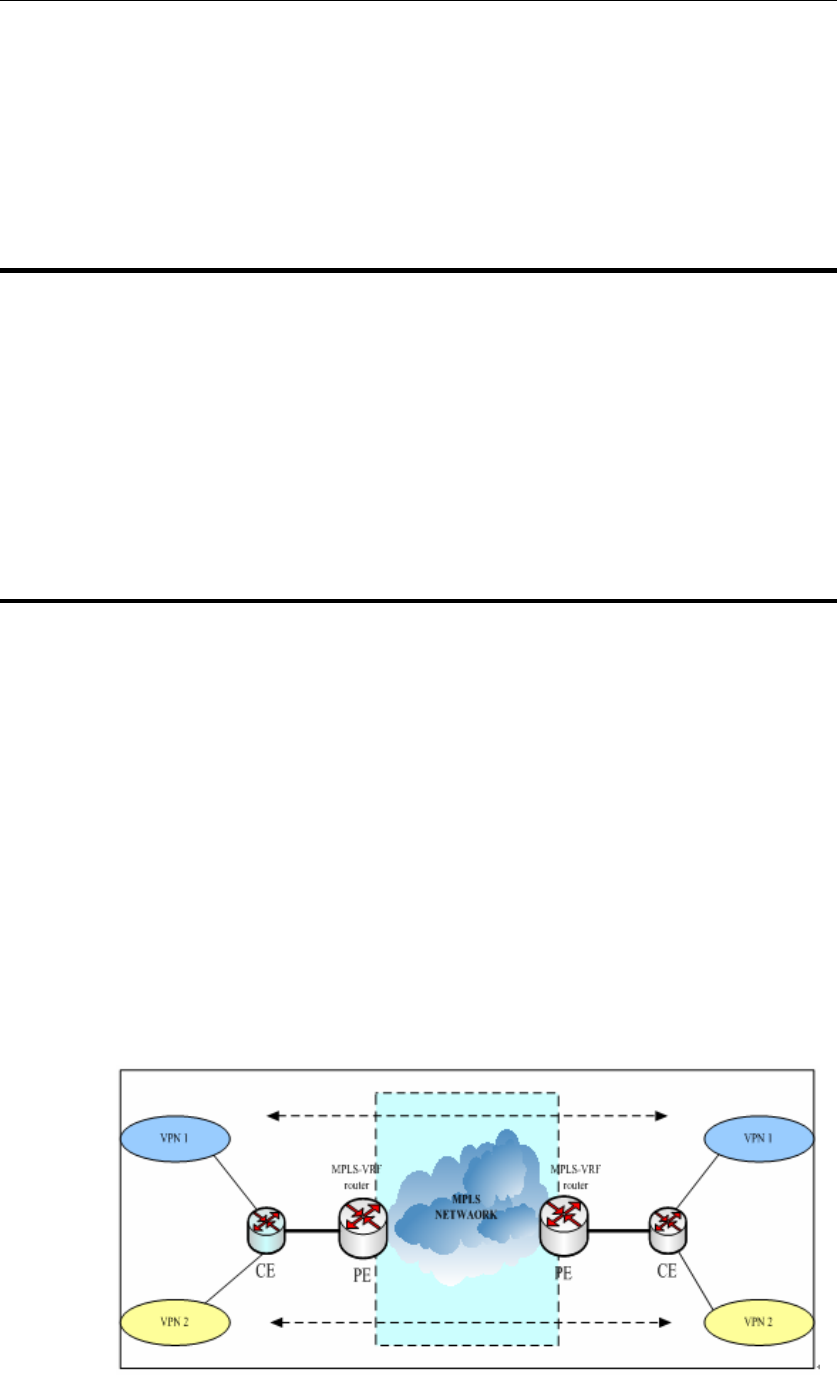
DES-7200 Configuration Guide Chapter 8 VRF
Configuration
8-1
8 VRF Configuration
8.1 VRF Overview
Virtual Private Networks (VPNs) provides a secure way to share bandwidth in the
backbone of ISP. One VPN is the collection of the sites sharing routes, which
connect to the vendor network through one to multiple interface link, with one
VPN routing tabel associated with one interface. The VPN routing table is also
referred to as VPN routing/forwarding table.
VRF-lite, also known as multi-VRF CE, or multi-VRF Customer Edge Device,
supports multiple VPN routing forwarding instances.
8.2 Working Principle of VRF-lite
VRF-lite mainly includes the following devices:
Customer edge (CE) devices provide customer access to multiple provider
edge (PE) routers. The CE device advertises the site’s local routes to the PE
router and learns the remote VPN routes from it.
Provider edge (PE) routers exchange routing information with CE devices by
using static routing or dynamic routing protocols (BGP, RIP or OSPF).
A PE device may have multiple interfaces belonging to a same VPN. PE
devices exchange VPN routing information through BGP protocol.
PE devices are independent of the features of CE devices.
P device doesn't handle VPN information, namely VPN information is
transparent to P device.


















